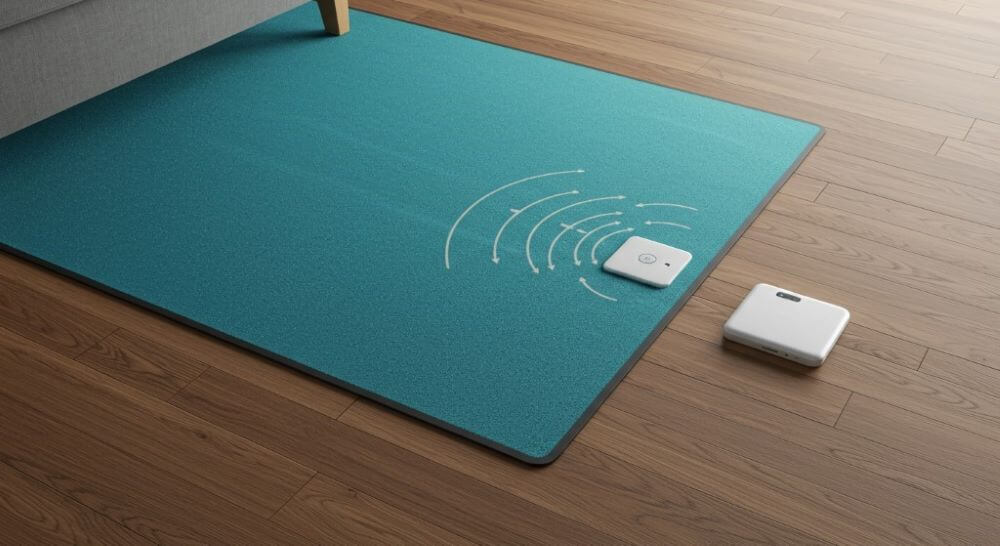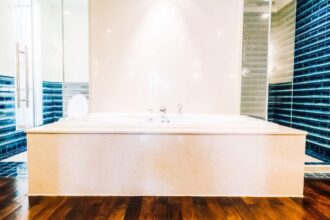Safety in aged care settings depends on more than attentive staff and tidy hallways. Residents face constant risks from falls, wandering, and health emergencies. Families want assurance that facilities balance protection with dignity. Floor sensor mats have become one of the most effective tools, offering a discreet way to detect risk and respond quickly.
Reducing the Risk of Unnoticed Falls
Falls often happen silently in private rooms, especially at night. Floor sensor mats placed beside beds or in key walking areas trigger alerts when someone steps onto them. Staff know immediately if a resident attempts to get up or has collapsed.
Unlike cameras or frequent checks, mats avoid invading privacy. They stop residents from lying unnoticed on the floor for long periods. Their silent monitoring allows help to arrive faster, without disrupting sleep or daily routines.
Floor pressure mats from websites like frequencyprecision.com can be linked with nurse call systems to alert staff when someone leaves a safe zone. The discreet design makes them especially helpful for residents living with dementia or those at higher risk of falling.
Supporting Safe Nighttime Mobility
Many residents wake at night to use the bathroom, a common time for accidents. A pressure mat positioned at the bedside signals staff if someone needs assistance. Residents feel reassured knowing help is close, but still maintain independence.
Facilities can link mats with soft lighting that turns on automatically when triggered. Gentle light guides safe movement without startling residents or disturbing sleep cycles. Detection with gentle light lowers risk at night, especially for dementia patients who may feel disoriented.
Enhancing Staff Efficiency Without Compromising Care
Aged care facilities often run with fewer staff overnight. Floor sensor mats extend coverage, helping workers focus where attention is most needed. Instead of checking every room, staff can respond only when alerts matter.
Some systems display alerts on a dashboard. Patterns in the data show which residents need more supervision or which times of day see higher risks. This approach improves efficiency and accuracy of care without adding to workloads, which matters in busy care homes.
Protecting Residents with Cognitive Impairments
Wandering is common among residents with dementia, often leading to unsafe situations. Mats placed near doorways or beds notify staff before someone leaves the room unsupervised.
Advanced mats can even distinguish between a caregiver’s footsteps and a resident’s. Fewer false alarms keep staff focused while residents maintain freedom. This way, floor pressure sensor mats become a practical safeguard for vulnerable patients who need extra support.
Reducing Reliance on Restraints and Physical Barriers
For years, facilities used bed rails and restraints to stop falls, but those measures often caused harm or emotional distress. Floor sensor mats provide a less intrusive alternative. They protect residents without limiting movement or causing fear.
Families notice the difference. Reports from facilities that adopt mats show fewer complaints about restrictive practices. Moving away from barriers builds trust while keeping safety with tools like a pressure mat kit.
Creating a Safer Environment for Shared Spaces
Safety challenges extend beyond bedrooms. Bathrooms, hallways, and recreation areas often see accidents, sometimes unnoticed until much later. Floor sensor mats in these zones help staff respond quickly when a resident lingers too long or struggles with balance.
Data collected from mats also highlights risky areas. If repeated triggers occur in one hallway, it may indicate hazards. Managers can adjust designs before more accidents happen, especially in areas with many elderly patients. Updated call systems integrate with mats, sending alerts quickly across different wings of a facility.
Facilitating Data-Driven Care
Every trigger the mat captures tells part of a resident’s story. Frequent nighttime activity may point to mobility issues, while repeated bathroom visits can show medical concerns. Staff can adjust care plans early, based on objective evidence.
Facilities can share clear records with families of when residents needed help and how staff responded. This builds confidence in care and shows mats as a key part of fall prevention, especially in modern care homes that value dignity.
Reducing Staff Stress and Burnout
Caregivers often feel the heavy responsibility of constant vigilance. Missing a fall or delay in response can weigh on them. Floor sensor mats reduce that mental burden by acting as a safety net, signaling only when action is necessary.
Improved working conditions also make it easier to retain experienced workers. A calmer setting supports staff and residents, including elderly people with complex needs.
For vulnerable patients, this steadier support translates into safer and more attentive care. Staff also benefit from standardized nurse call systems that make communication easier and reduce missed alerts.
Enhancing Emergency Response
Every second counts after a fall. Floor sensor mats shorten response times by notifying staff immediately. Quicker intervention prevents complications such as hypothermia, shock, or pressure sores.
Some facilities integrate mats into a wider alarm system. An alert from a mat can trigger notifications to external responders if staff cannot reach the scene in time.
Early detection with faster treatment saves lives, especially for residents in the advanced Alzheimer’s stage. A pressure alarm mat has sometimes helped staff reach a resident before conditions worsened, making the alarm system more dependable.
Encouraging Trust Among Families
Facilities that adopt floor sensor mats demonstrate a proactive approach to resident protection. Relatives feel reassured that their loved ones are constantly safeguarded without being restricted.
Trust grows when families see detailed medical reports and know that staff act quickly. In a competitive aged care sector, this level of transparency can influence family decisions about where to place loved ones.
Wireless sensor mats assure families that monitoring keeps up with modern care homes.. Updated call systems also show families how fast staff respond, ensuring safety comes first and vulnerable patients stay protected.
Conclusion
Floor sensor mats do more than prevent falls. They help create a safer, calmer environment where residents retain dignity and staff feel supported. With immediate alerts, data-driven insight, and discreet monitoring, these mats play a vital role in aged care safety.

















